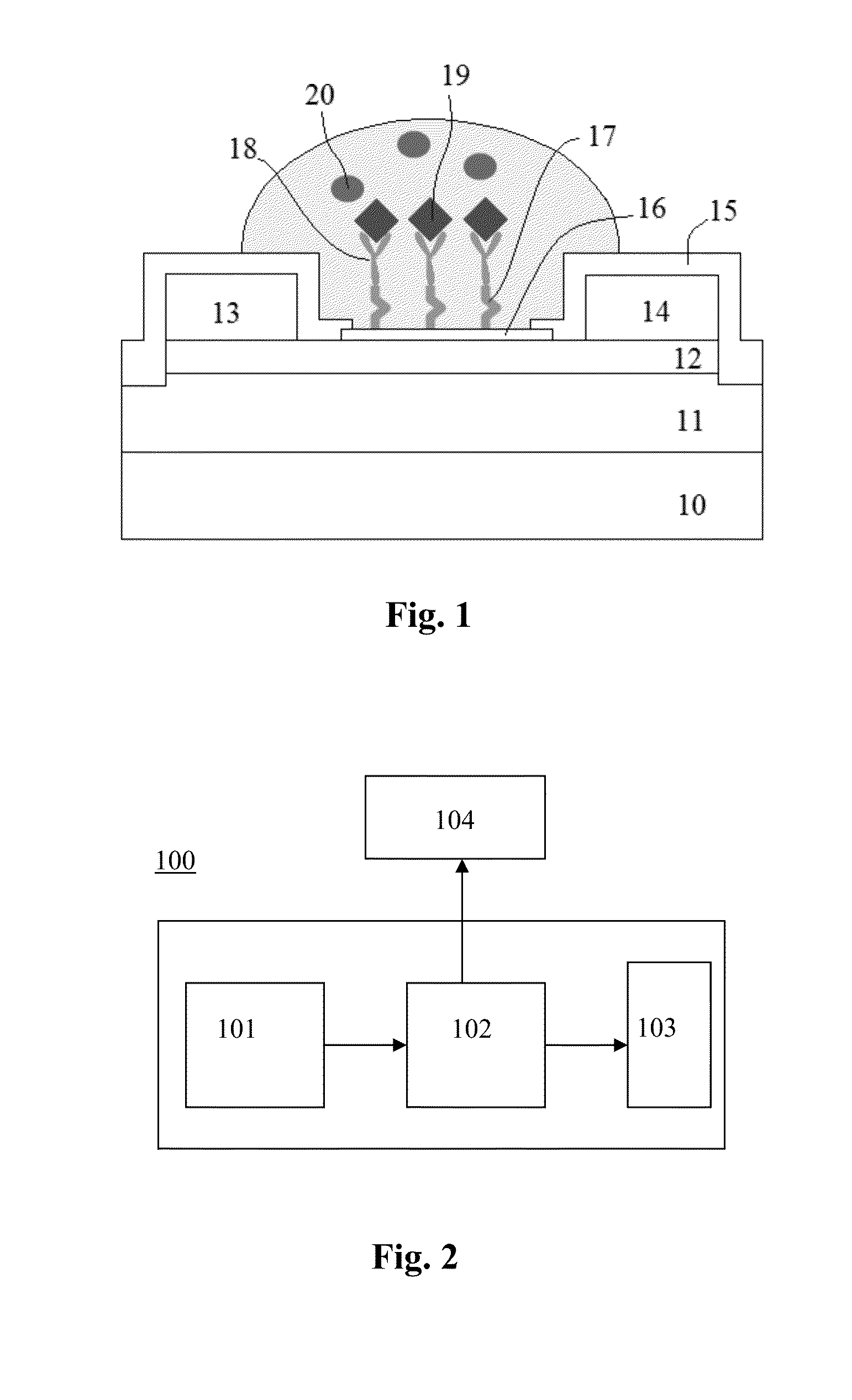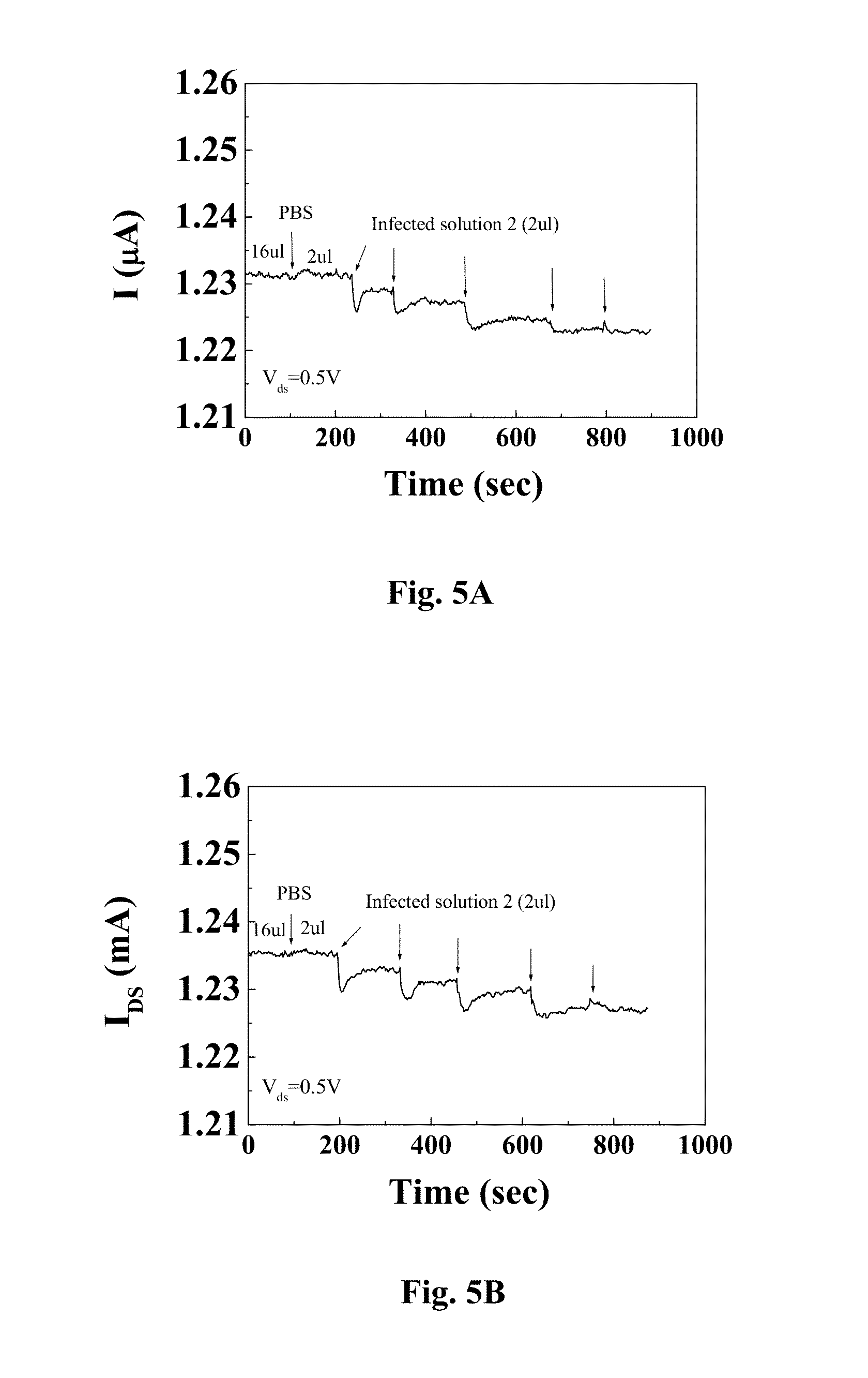Wireless based marine pathogens detection system
a detection system and wireless technology, applied in the field of wireless based marine pathogen detection system, can solve the problems of significant mortalities, uncontrolled introduction of exotic species, and severe economic loss of the shellfish industry, and achieve the effect of easy, rapid, on-site detection of an organism
- Summary
- Abstract
- Description
- Claims
- Application Information
AI Technical Summary
Benefits of technology
Problems solved by technology
Method used
Image
Examples
examples
[0041]The HEMT structures used for the following examples have a 3 μm thick undoped GaN buffer, a 30 Å thick Al0.3Ga0.7N spacer, and a 220 Å thick Si-doped Al0.3Ga0.7N cap layer. Here, the epi-layers were grown by a molecular beam epitaxy system (MBE) on sapphire substrates. Mesa isolation was performed by an Inductively Coupled Plasma (ICP) etching with Cl2 / Ar based discharges at −90 V dc self-bias, ICP power of 300 W at 2 MHz and a process pressure of 5 mTorr. Ohmic contacts, each having an area of 10×50 μm2 and separated with gaps of 5 μm, were formed of e-beam deposited Ti / Al / Pt / Au patterned by lift-off. The contacts were annealed at 850° C. for 45 sec under flowing N2. A thin layer of Au was deposited on the gate region. A 400-nm-thick 4% Poly(methyl methacrylate) (PMMA) was used to encapsulate the source / drain regions, with only the gate region open to allow the liquid solutions to cross the surface.
[0042]The Au gated surface of the HEMT was functionalized with thioglycolic ac...
PUM
| Property | Measurement | Unit |
|---|---|---|
| drain current | aaaaa | aaaaa |
| detection time | aaaaa | aaaaa |
| thick | aaaaa | aaaaa |
Abstract
Description
Claims
Application Information
 Login to View More
Login to View More - R&D
- Intellectual Property
- Life Sciences
- Materials
- Tech Scout
- Unparalleled Data Quality
- Higher Quality Content
- 60% Fewer Hallucinations
Browse by: Latest US Patents, China's latest patents, Technical Efficacy Thesaurus, Application Domain, Technology Topic, Popular Technical Reports.
© 2025 PatSnap. All rights reserved.Legal|Privacy policy|Modern Slavery Act Transparency Statement|Sitemap|About US| Contact US: help@patsnap.com



